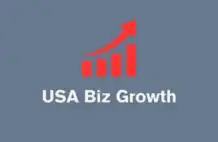
How Do You Achieve Agile Growth When Markets Won’t Sit Still? 📈
You, the visionary leaders, the tenacious entrepreneurs, the dedicated team members, you know the drill. The market shifts, seemingly without warning. New competitors emerge from the shadows. Consumer demands pivot on a dime.
One minute, you’re sailing smoothly; the next, you’re navigating a tempest. How do you not just survive, but thrive, in such volatile markets? How do you build an organization that bends without breaking, one that not only weathers the storm but emerges stronger, more innovative and more successful?
This isn’t about mere survival; it’s about mastering the art of Smart Agile Growth, cultivating steadfast resilience in the face of constant change.
The Illusion of Stability: Why Traditional Approaches Fail 🌊
Remember the good old days? The five-year plans, the meticulously crafted roadmaps, the predictable quarterly reports? They felt so safe, so concrete.
But then came the 2008 financial crisis, the dot-com bust, the global pandemic and a hundred other seismic shifts that proved one fundamental truth: stability is an illusion.
Traditional, rigid business models are like grand ocean liners, impressive in their size and power, but slow to turn. When an iceberg appears suddenly, they lack the agility to avoid collision.
In volatile markets, these lumbering giants often find themselves capsizing, weighed down by their own inertia. Do you still cling to those outdated paradigms? Are your processes still designed for a world that no longer exists?
The problem isn’t just the speed of change; it’s the unpredictability of it. Who could have foreseen the meteoric rise of certain technologies or the sudden collapse of established industries?
This isn’t a world for the faint of heart, nor for those who believe in static strategies. It demands a dynamic, adaptive and relentlessly innovative approach.
Decoding Agile: Beyond Buzzwords, Towards True Adaptability 💡
Agile isn’t just a project management methodology; it’s a mindset. It’s a fundamental shift in how you view work, collaboration and value delivery. Forget the waterfall model, where every step is meticulously planned out before a single line of code is written or a single product is developed.
Agile embraces iteration, continuous feedback and rapid response to change.
Think of it like this: instead of trying to predict the entire journey with a single, unchangeable map, agile equips you with a compass and the ability to course-correct in real-time.
You take small, iterative steps, constantly evaluating your progress and adjusting your direction based on new information. Is that how your teams operate? Do they have the autonomy to adapt?
At its core, agile is about delivering value frequently and incrementally. It’s about cross-functional teams, transparent communication and a relentless focus on customer satisfaction.
It’s about breaking down large, daunting projects into manageable sprints, allowing for quick wins and immediate feedback. This iterative process isn’t just efficient; it’s a powerful mechanism for building resilience.
“The only way to make sense out of change is to plunge into it, move with it and join the dance.” – Alan Watts. This quote beautifully encapsulates the essence of an agile mindset. It’s not about resisting change, but embracing it as an integral part of the journey.
The Pillars of Smart Agile Growth in Volatile Markets 💪
Achieving Smart Agile Growth isn’t about adopting a few agile practices; it’s about weaving an agile philosophy into the very fabric of your organization. It’s about building a framework that allows you to flourish amidst the chaos of volatile markets.
-
Customer-Centricity: Your North Star in the Storm 🧭
In an uncertain world, one thing remains constant: the customer. Their needs, their desires, their evolving preferences are your ultimate guide. Smart Agile Growth places the customer at the absolute center of every decision.
Are you truly listening to your customers? Do you understand their pain points, even those they haven’t articulated yet?
This isn’t about sporadic surveys; it’s about continuous engagement, empathy mapping and user testing. It’s about building products and services that truly solve problems and create value.
When you relentlessly focus on delivering what your customers genuinely need, you build loyalty, foster innovation and create a resilient demand for your offerings, even when the market shifts beneath your feet.
Remember, “The customer is not always right, but they are always the customer.” – Michael O’Malley. This doesn’t mean blindly obeying every whim, but rather understanding their underlying needs and challenges.
-
Empowered, Autonomous Teams: The Engine of Adaptability 🚀
Traditional hierarchies can be bottlenecks in a fast-paced environment. Decisions get stuck in layers of bureaucracy, hindering rapid response. Smart Agile Growth thrives on empowered, autonomous teams.
These aren’t just groups of people; they are self-organizing units with the authority and responsibility to make decisions, solve problems and deliver value.
Do your teams have this level of autonomy?
Imagine a small boat with a dedicated crew, each member knowing their role and empowered to act quickly in a storm. Compare that to a rigid battleship where every command must go through a lengthy chain of command.
Which one is more likely to navigate treacherous waters successfully? Empowered teams are faster, more innovative and more resilient. They foster a sense of ownership and accountability, leading to higher morale and better results.
-
Continuous Learning and Iteration: The Growth Loop 🔄
The world is a constantly evolving classroom. What worked yesterday might not work today and what works today might be obsolete tomorrow. Smart Agile Growth embraces a culture of continuous learning and iteration.
This isn’t just about professional development courses; it’s about embedding learning into the daily workflow. Are your teams regularly reflecting on their processes? Are they actively seeking feedback and adapting based on it?
Think of the “Build-Measure-Learn” loop: you build a small increment of value, measure its impact, learn from the results and then iterate.
This constant cycle of experimentation and adaptation allows you to fail fast, learn faster and pivot effectively. It’s how you stay ahead of the curve in volatile markets.
-
Transparent Communication and Collaboration: Bridging the Gaps 🗣️
Information silos are death traps in a dynamic environment. When teams don’t communicate effectively, misunderstandings arise, efforts are duplicated and opportunities are missed.
Smart Agile Growth champions transparent communication and collaboration across all levels of the organization. Is information flowing freely within your organization or are there bottlenecks and hidden agendas?
This means open backlogs, shared progress boards, regular stand-up meetings and a culture where feedback is welcomed, not feared. It’s about breaking down departmental barriers and fostering a sense of shared purpose.
When everyone is on the same page, pulling in the same direction, your organization becomes a cohesive force, capable of navigating even the most turbulent waters.
-
Embracing Technology as an Enabler, Not a Burden 🤖
Technology isn’t just a tool; it’s a powerful enabler of Smart Agile Growth. From cloud computing to artificial intelligence, from data analytics to automation, the right technologies can amplify your agility, accelerate your innovation and provide invaluable insights into volatile markets.
Are you leveraging technology to its fullest potential or is it an afterthought?
However, it’s crucial to remember that technology is a means to an end, not an end in itself. Don’t adopt new tech for the sake of it.
Instead, identify the specific challenges you face and then seek out the technological solutions that can help you overcome them.
Focus on tools that foster collaboration, automate repetitive tasks, provide real-time data and enable faster decision-making.
Navigating Volatile Markets: Practical Strategies for Resilience 🛡️
Volatile markets are characterized by rapid, unpredictable shifts in consumer behavior, economic conditions, geopolitical events and technological advancements. They are the ultimate test of an organization’s adaptability and resilience.
How do you not just survive, but truly thrive in such an environment?
-
Scenario Planning and Contingency Management: Anticipating the Unthinkable 🤯
While you can’t predict the future, you can prepare for multiple futures. Scenario planning involves imagining various plausible future states – optimistic, pessimistic and somewhere in between and then developing strategies to address each.
What if a major competitor enters your market? What if there’s a sudden economic downturn? What if a new technology disrupts your industry overnight?
By thinking through these “What-If” scenarios, you can develop contingency plans that minimize risks and maximize opportunities.
This isn’t about fear-mongering; it’s about proactive preparedness. It’s about building robustness into your system, so you’re not caught off guard when the unexpected happens.
-
Diversification of Revenue Streams and Offerings: Don’t Put All Your Eggs in One Basket 🧺
Relying on a single product, service or customer segment in a volatile market is like building a house on quicksand. If that one foundation crumbles, your entire structure collapses.
Smart Agile Growth emphasizes diversification of revenue streams and offerings. Are you exploring new markets? Are you developing complementary products or services?
This doesn’t mean spreading yourself thin. It means strategically expanding your portfolio to reduce dependence on any single source of income.
When one market segment experiences a downturn, others can cushion the blow, providing stability and allowing you to continue investing in innovation.
-
Financial Prudence and Flexibility: The Safety Net 💰
In times of uncertainty, a strong financial position is paramount. Financial prudence isn’t about hoarding cash; it’s about intelligent resource allocation, efficient operations and maintaining sufficient liquidity to weather unexpected shocks.
Are your financial forecasts agile enough to adapt to rapid changes? Do you have access to lines of credit or other financial safeguards?
This also involves building financial flexibility into your operations.
Can you quickly scale up or down your resources based on market demand? Can you reallocate budgets to respond to emerging opportunities or threats? A rigid budget in a dynamic market is a recipe for disaster.
-
Cultivating a Growth Mindset: Embracing Challenges as Opportunities 🌱
“The greatest danger in times of turbulence is not the turbulence itself, but to act with yesterday’s logic.” – Peter Drucker. This powerful quote highlights the importance of adapting your thinking.
In volatile markets, a fixed mindset, one that fears change and clings to the familiar, will ultimately lead to stagnation.
Smart Agile Growth thrives on a growth mindset, where challenges are viewed as opportunities for learning and improvement. It’s about fostering a culture of experimentation, where failure is seen as a stepping stone to success, not a reason to give up.
Are your employees encouraged to experiment, even if it means sometimes failing?
-
Talent Management and Adaptable Workforce: Your Greatest Asset 👩💻👨🏭
Your people are your most valuable asset, especially in a dynamic environment. Building an adaptable workforce means investing in continuous learning and skill development, cross-training employees and fostering a culture of psychological safety where individuals feel empowered to take risks and voice ideas.
Are your employees equipped with the skills they need to navigate future challenges?
It also means having agile talent acquisition and retention strategies. Can you quickly bring in specialized skills when needed? Can you retain your top talent amidst market fluctuations? A resilient workforce is the backbone of steadfast resilience.
Measuring Agile Growth: Beyond Traditional Metrics 📊
In the pursuit of Smart Agile Growth, traditional metrics might not tell the whole story. While financial performance remains crucial, it’s essential to look beyond lagging indicators and focus on metrics that truly reflect your organization’s agility and resilience in volatile markets.
-
Velocity and Throughput: The Speed of Value Delivery ⚡
How quickly are your teams delivering working software, products or services? Velocity measures the amount of work a team can complete in a single sprint, while throughput measures the total amount of value delivered over time.
These metrics provide insights into your team’s efficiency and ability to adapt. Are your teams consistently improving their velocity?
-
Lead Time and Cycle Time: From Idea to Customer ⏱️
Lead time measures the total time from when a customer request or idea is conceived to when it’s delivered to the customer. Cycle time measures the time it takes to complete a specific task or process.
Shorter lead and cycle times indicate greater agility and responsiveness to market demands. How quickly can you bring a new idea to fruition?
-
Customer Satisfaction and Net Promoter Score (NPS): The Voice of the Market ❤️
Ultimately, Smart Agile Growth is about delivering value to your customers. Customer satisfaction and NPS (Net Promoter Score) are crucial indicators of how well you’re meeting their needs and building loyalty.
Are your customers happy? Are they advocating for your brand? Consistent monitoring of these metrics provides a direct feedback loop from the market, allowing for rapid adjustments.
-
Employee Engagement and Retention: The Health of Your Internal Ecosystem 😊
An engaged workforce is a resilient workforce. High employee engagement and retention rates indicate a healthy organizational culture, a positive work environment and a workforce that feels valued and empowered.
In a volatile market, your internal ecosystem’s health directly impacts your ability to adapt and innovate. Are your employees thriving?
-
Innovation Rate: The Pulse of Future Growth 🚀
How many new ideas are being generated and implemented? What percentage of your revenue comes from new products or services launched in the last year?
The innovation rate is a critical metric for assessing your organization’s ability to evolve and create new value streams. It reflects your proactive approach to staying relevant and competitive in volatile markets.
The Journey to Smart Agile Growth: It’s a Marathon, Not a Sprint 🏁
Achieving Smart Agile Growth is not a one-time project; it’s an ongoing journey, a continuous evolution. It requires commitment, patience and a willingness to embrace change at every level of your organization.
It’s about fostering a culture where agility isn’t just a buzzword, but a lived reality.
Think of it as cultivating a garden in a changing climate. You don’t just plant once and hope for the best. You constantly tend to the soil, prune the plants, adapt to the weather and introduce new varieties as needed.
Similarly, your organization needs constant nurturing, adaptation and innovation to truly achieve steadfast resilience in volatile markets.
This journey begins with a decision, a firm commitment to shed outdated practices and embrace a dynamic, adaptive future. It requires leadership that champions change, teams that are empowered to innovate and a culture that celebrates learning and continuous improvement.
What’s your next step? Where will you begin to infuse more Agile Growth into your operations?
Conclusion: Thrive, Don’t Just Survive, with Agile Growth 🏆
In a world defined by constant flux and volatile markets, the ability to achieve Smart Agile Growth isn’t just a competitive advantage; it’s a fundamental requirement for survival and prosperity.
It’s about building an organization that isn’t afraid of change but actively thrives on it, transforming uncertainty into an engine for innovation and progress.
By embracing customer-centricity, empowering your teams, fostering continuous learning, promoting transparent communication and strategically leveraging technology, you can build an organization that is not only resilient but also remarkably agile.
You can move beyond merely reacting to market shifts and proactively shape your own future.
The future belongs to the agile. It belongs to those who can pivot with purpose, innovate with speed and maintain unwavering focus on delivering value amidst the chaos.
Are you ready to lead your organization on this transformative journey? Are you ready to unleash the full potential of Smart Agile Growth and achieve steadfast resilience in the face of whatever the market throws your way? The time to act is now.
CTA ➡️
Take the first step towards Smart Agile Growth today. Assess your current organizational agility, identify key areas for improvement and embark on the path to a more resilient and prosperous future.
Q&As: Smart Agile Growth ❓
Q1: What is “Smart Agile Growth” and how does it differ from traditional business approaches in volatile markets?
Smart Agile Growth is a dynamic approach to organizational development that emphasizes adaptability, continuous learning and customer-centricity to thrive in unpredictable economic conditions.
Unlike traditional, rigid models that rely on long-term, fixed plans, Smart Agile Growth embraces iterative processes, rapid feedback loops and empowered teams, allowing organizations to quickly pivot and innovate in response to market shifts.
It’s about building inherent resilience rather than just reacting to external changes.
Q2: Why is customer-centricity highlighted as a key pillar for Smart Agile Growth?
In volatile markets, customer needs and preferences can change rapidly. Customer-centricity acts as a “North Star” by ensuring that all organizational efforts are focused on delivering real value to the customer.
By continuously engaging with and understanding customers, businesses can build products and services that truly solve problems, fostering loyalty and creating resilient demand even during market turbulence.
This consistent focus helps in making informed decisions and adapting offerings to evolving demands.
Q3: How do empowered, autonomous teams contribute to an organization’s resilience?
Empowered, autonomous teams are crucial because they can make rapid decisions and respond quickly to emerging challenges or opportunities without needing multiple layers of approval.
This decentralization of decision-making speeds up innovation and problem-solving. These teams foster a sense of ownership, accountability and higher morale, enabling the organization to be more adaptable and efficient in navigating complex and fast-changing environments.
Q4: What role does continuous learning and iteration play in navigating volatile markets?
Continuous learning and iteration are fundamental to Smart Agile Growth as they enable organizations to adapt and evolve constantly. By adopting a “Build-Measure-Learn” loop, businesses can experiment with small increments of value, measure their impact, learn from the results and then quickly iterate.
This cycle allows for rapid adjustments, minimizes the impact of failures and ensures that the organization remains ahead of the curve, even as market conditions fluctuate.
Q5: Beyond financial metrics, what other indicators are important for measuring Smart Agile Growth?
While financial performance remains important, Smart Agile Growth requires a broader set of metrics. Key indicators include:
- Velocity and Throughput: Measuring how quickly teams deliver value.
- Lead Time and Cycle Time: Assessing the speed from idea conception to customer delivery.
- Customer Satisfaction and Net Promoter Score (NPS): Gauging customer happiness and loyalty.
- Employee Engagement and Retention: Reflecting the health of the internal organizational culture.
- Innovation Rate: Tracking the generation and implementation of new ideas and revenue from new offerings.
These metrics provide a holistic view of an organization’s agility, resilience and ability to innovate in dynamic environments.
Categories
- Business Growth Strategies (143)
- Customer Experience and Retention (23)
- Digital Marketing and SEO (28)
- Financial Planning and Investment (26)
- Leadership and Team Management (28)
- Personal Development and Productivity (71)
- Technology and Innovations (52)
- USA Biz Growth (1)
Subscribe To Our Newsletter













